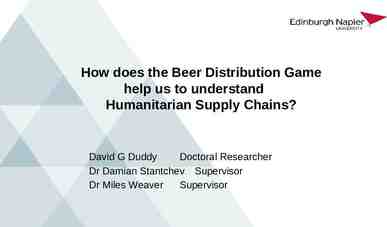Subregional workshop on the implementation of the Convention on the
41 Slides619.50 KB

Subregional workshop on the implementation of the Convention on the Transboundary Effects of Industrial Accidents Erevan, Armenia 13-15 March 2003 Sergiusz Ludwiczak United Nations Economic Commission for Europe

Focus of my presentation: KEY OBLIGATIONS UNDER THE UNECE CONVENTION ON THE TRANSBOUNDARY EFFECTS OF INDUSTRIAL ACCIDENTS (Industrial Accidents Convention) also Status of ratification of the Convention Other UNECE Multilateral Environmental Agreements

ECE CONVENTIONS – TOOLS FOR TRANSBOUNDARY COOPERATION What is the UNECE? It is one of the five Regional Commissions of the United Nations Its main task – integration of the countries of the region, and in particular the integration of the countries with economies in transition into the European economy Its membership - 55 member countries (Europe, North America and Central Asia)

FI NO SE RU EE LV DK IE BY NL GB BE FR LT PL DE LU. CZ AT CH SL IT ES PT UA SK HU HR BA RO YU AL MK GR KZ MD BG GE TR CY AM AZ TM KG UZ TJ

ECE CONVENTIONS – TOOLS FOR TRANSBOUNDARY COOPERATION Multilateral Environmental Agreements Significant achievements within the framework of the UNECE (seventeen legally binding instruments): – Five Conventions – all in force – Nine Protocols – five in force – Three new legally binding instruments – ready for adoption in Kiev in 2003

ECE CONVENTIONS – TOOLS FOR TRANSBOUNDARY COOPERATION Conventions: – 1979 Long-range Transboundary Air Pollution – 1991 Environmental Impact Assessment in a Transboundary Context – 1992 Protection and Use of Transboundary Watercourses and International Lakes – 1992 Transboundary Effects of Industrial Accidents – 1998 Access to Information, Public Participation in Decision-making and Access to Justice in Environmental Matters

UNECE CONVENTION ON THE TRANSBOUNDARY EFFECTS OF INDUSTRIAL ACCIDENTS

CONVENTION ON THE TRANSBOUNDARY EFFECTS OF INDUSTRIAL ACCIDENTS The Convention aims to: Protect human beings and the environment against major industrial accidents by preventing such accidents as far as possible, by reducing their frequency and severity and by mitigating their effects Promote cooperation between member countries of the UNECE region, not only between governments at the national level but in particular between local authorities and communities on both sides of a border

CONVENTION ON THE TRANSBOUNDARY EFFECTS OF INDUSTRIAL ACCIDENTS This complex instrument applies to the: Prevention Civil liability Industrial accidents Response Preparedness

CONVENTION ON THE TRANSBOUNDARY EFFECTS OF INDUSTRIAL ACCIDENTS The effectiveness of the Convention depends on: The number of countries that are Parties to it; and The extent it is implemented and applied in practice

CONVENTION ON THE TRANSBOUNDARY EFFECTS OF INDUSTRIAL ACCIDENTS Is the current ratification status satisfactory? No, it is not – a major concern Although the number of ratifications is increasing, the pace of extending the geographical scope of the Convention is too slow

CONVENTION ON THE TRANSBOUNDARY EFFECTS OF INDUSTRIAL ACCIDENTS Ratification status 30 27 23 25 26 20 20 15 Signatories Parties 9 10 5 0 1992 1997 2000 2001 2003

CONVENTION ON THE TRANSBOUNDARY EFFECTS OF INDUSTRIAL ACCIDENTS Parties to the Convention NORWAY REPUBLIC OF MOLDOVA ALBANIA RUSSIAN FEDERATION HUNGARY LUXEMBOURG BULGARIA ARMENIA SPAIN GREECE EUROPEAN COMMUNITY GERMANY SWITZERLAND AUSTRIA FINLAND SWEDEN CROATIA ESTONIA CZECH REPUBLIC LITHUANIA KAZAKHSTAN DENMARK MONACO SLOVENIA ITALY UNITED KINGDOM

.

CONVENTION ON THE TRANSBOUNDARY EFFECTS OF INDUSTRIAL ACCIDENTS The Caucasian and Central Asian UNECE member countries ARMENIA Azerbaijan Georgia KAZAKHSTAN Kyrgyzstan Tajikistan Turkmenistan Uzbekistan

CONVENTION ON THE TRANSBOUNDARY EFFECTS OF INDUSTRIAL ACCIDENTS Is there any progress in applying the Convention in practice since its entry into force? YES, significant progress has been achieved

CONVENTION ON THE TRANSBOUNDARY EFFECTS OF INDUSTRIAL ACCIDENTS On the basis of the first Report on the Implementation of the Convention, prepared by the Working Group on Implementation for the second meeting of the Conference of the Parties – Most of the Parties met their reporting obligation. Only two other UNECE member countries submitted reports on a voluntary basis

CONVENTION ON THE TRANSBOUNDARY EFFECTS OF INDUSTRIAL ACCIDENTS Findings: A good number of Parties and other UNECE member countries are well advanced in fulfilling their tasks at the national level Cross-boarder cooperation is being undertaken or developed between countries of the region (The PolishRussian transboundary response exercise is a good example) The CoP took important decisions to facilitate the cooperation between Parties and to ensure a basis for a common approach

CONVENTION ON THE TRANSBOUNDARY EFFECTS OF INDUSTRIAL ACCIDENTS However, not all the tasks have so far been implemented and not by all Parties The CoP considered how to strengthen the Convention’s implementation and adopted a special decision A programme for some of the CITs is envisaged to assist them in ratifying and implementing the Convention – Subregional workshop – essential element

INDUSTRIAL ACCIDENTS CONVENTION KEY OBLIGATIONS The Convention: Promotes bilateral transboundary cooperation – an essential feature Sets the bilateral obligations and the legal framework for such cooperation Comprises a set of obligations: – At the national level - prerequisites – At the intergovernmental level - facilitation

INDUSTRIAL ACCIDENTS CONVENTION KEY OBLIGATIONS Designation of Competent Authorities Bilateral task: Inform other Parties of the designated competent authorities National task: Designate or establish competent authorities responsible for the Convention’s implementation

INDUSTRIAL ACCIDENTS CONVENTION KEY OBLIGATIONS Competent Authorities Most Parties designated their competent authorities Depending on the country there is one or more authorities Good coordination at the country level is a condition for efficient transboundary cooperation In some cases, the efficient flow of information and coordination seems to be a problem

INDUSTRIAL ACCIDENTS CONVENTION KEY OBLIGATIONS Identification and notification of hazardous activities (This a difficult task but a crucial step to make the Convention work) Bilateral task: Notify (discuss) neighbouring country(ies) National task: Identify hazardous activities according to: – annex I to the Convention (substance and quantity criteria) – similar to Annex I of the “Seveso II” Directive Intergovernmental task: Ensure a common approach: – The CoP agreed on the following location criteria:

INDUSTRIAL ACCIDENTS CONVENTION KEY OBLIGATIONS Identification of hazardous activities Activities within 15 km from the border Activities further away but along or within a catchment area of a transboundary or border river

INDUSTRIAL ACCIDENTS CONVENTION KEY OBLIGATIONS Prevention of industrial accidents Bilateral task: Share experience and assist other countries in introducing preventive measures National task: Take appropriate measures and require operators to demonstrate the safe performance of hazardous activities Intergovernmental task: Draw up and disseminate best practices/guidelines on prevention of industrial accidents, including accidental water pollution: – Joint work with the Water Convention and International River Commissions

INDUSTRIAL ACCIDENTS CONVENTION KEY OBLIGATIONS Emergency preparedness and response Bilateral task: Provide information on on-site contingency plans and make off-site plans compatible/joint plans National task: Establish and maintain adequate preparedness and response measures, including: on-site and off-site contingency plans

INDUSTRIAL ACCIDENTS CONVENTION KEY OBLIGATIONS Emergency preparedness and response Intergovernmental task: Provide a forum to share experience on establishing and implementing preparedness and response measures and promote transboundary training and exercises Three examples: – International Workshop and exercise on Industrial Safety and Water Protection in Transboundary River Basins (3-5 October 2001, Tiszaújváros, Hungary); – Polish-Russian transboundary response exercise in Kętrzyn – Czech-German transboundary response exercise

INDUSTRIAL ACCIDENTS CONVENTION KEY OBLIGATIONS Industrial accident notification Bilateral task: Immediately notify the affected country(ies) in the event of a major industrial accident with transboundary effects (at national, regional and local levels) National tasks: – Establish and operate notification systems at the national and other (regional and local) levels; – Designate a national point of contact – operational 24 hours a day

INDUSTRIAL ACCIDENTS CONVENTION KEY OBLIGATIONS Industrial Accidents Notification Intergovernmental task: Ensure a common approach: – The CoP accepted the UNECE Industrial Accident Notification System as an early warning tool for notifying a major accident at national level; – The system comprises: A network of national points of contact (36 countries); Procedure and set of notification forms to be used: – Early warning report, Information report, Assistance request report

INDUSTRIAL ACCIDENTS CONVENTION KEY OBLIGATIONS Past industrial accidents Bilateral task: Share information with other Parties on past industrial accidents with transboundary effects National task: Report on past industrial accidents Intergovernmental task: Ensure a common approach: – The CoP decided to establish and operate the UNECE Past Industrial Accident Reporting System within the EU-MARS (Major Accident Reporting System) – joint work with the EC Major Accident Hazards Bureau

INDUSTRIAL ACCIDENTS CONVENTION KEY OBLIGATIONS Other areas of bilateral cooperation include: Mutual assistance in case of a major accident: – Within the UNECE Industrial Accident Notification System Scientific and technological cooperation, exchange of information: – Exchange information, experience and technology related to prevention, preparedness and response to industrial accidents Information to and participation of the public: – Inform the potentially affected public in the neighbouring country and provide opportunity to participate in relevant procedures - equal treatment

INDUSTRIAL ACCIDENTS CONVENTION Civil liability for transboundary damage caused by transboundary effects of industrial accidents A new challenge for the Parties to both the Industrial Accidents and the Water Conventions

INDUSTRIAL ACCIDENTS CONVENTION Civil liability for transboundary damage Accidental cyanide spill in Romania in early 2000 Initiative of the Government of Switzerland to draw up a protocol on civil liability to the UNECE Industrial Accidents and Water Conventions Working Group on Legal and Administrative Aspects identifies shortcomings of existing international civil liability instruments in their report on “Responsibility and liability in relation to accidental water pollution”

INDUSTRIAL ACCIDENTS CONVENTION Civil liability for transboundary damage The Parties to the UNECE Conventions on Industrial Accidents and on Water, at a special joint session in July 2001, decided to launch an intergovernmental negotiation process to draw up a legally binding instrument for transboundary damage caused by hazardous activities within the framework of both Conventions Established an Intergovernmental Working Group on Civil Liability with a mandate to draw up the instrument

INDUSTRIAL ACCIDENTS CONVENTION Civil liability for transboundary damage The Working Group held seven meetings in 2001-2003 under a very effective chairmanship of Ms. Livada (Greece) The negotiation process was successfully completed on 27 February 2003 Wide participation of all stakeholders: governments, industry, insurance sector and NGOs The draft Protocol is now ready for adoption at the Kiev Ministerial Conference “Environment for Europe” and will be open for signature by UNECE member countries

INDUSTRIAL ACCIDENTS CONVENTION The scope of application of the Protocol is limited to damage caused by transboundary effects of industrial accidents on transboundary waters (interface approach) Water Industrial accidents

INDUSTRIAL ACCIDENTS CONVENTION Conference of the Parties Constituted as the Convention’s governing body at its first meeting in Brussels in November 2000 Held its second meeting in Chisinau on 6-8 November 2002 Its third meeting is scheduled for 2004 in Budapest

INDUSTRIAL ACCIDENTS CONVENTION C o n fe r e n c e o f th e P a r tie s UNECE s e c r e ta r ia t B u reau W o r k in g G r o u p o n I m p le m e n ta tio n P o in ts o f c o n ta c t J o in t a d h o c e x p e r t g ro u p o n w a ter a n d in u s tr ia l a c c id e n ts W o r k in g G r o u p o n C iv il L ia b ility

INDUSTRIAL ACCIDENTS CONVENTION Bureau of the Conference of the Parties Chairperson: Mr. Ernst Berger (Switzerland) Vice-Chairpersons: Mr. Jürgen Wettig (European Commission) Mr. Pal Popelyak (Hungary) Members (Parties): Mr. Ludwig Dinkloh (Germany) Mr. Pietro La Grotta (Italy) Mr. Evgeny Gorshkov (Russian Federation) Mr. Ulf Bjurman (Sweden) (non-Parties) Mr. Tomas Trcka (Slovakia)

INDUSTRIAL ACCIDENTS CONVENTION Future meetings under the Convention Second joint special session of the governing bodies of the Industrial Accidents and Water Conventions within the framework of the Kiev Ministerial Conference “Environment for Europe” – adoption of the Civil Liability Protocol 21 May 2003 (Kiev, Ukraine) Second meeting of the Working Group on Implementation Second half of 2003 Consultation of the points of contact within the UNECE Industrial Accident Notification System 10-11 November 2003 (Bratislava, Slovakia)

CONVENTION ON THE TRANSBOUNDARY EFFECTS OF INDUSTRIAL ACCIDENTS I invite you to visit the Convention’s Internet home page at the following address: http://www.unece.org/env/teia/welcome.html Thank you





